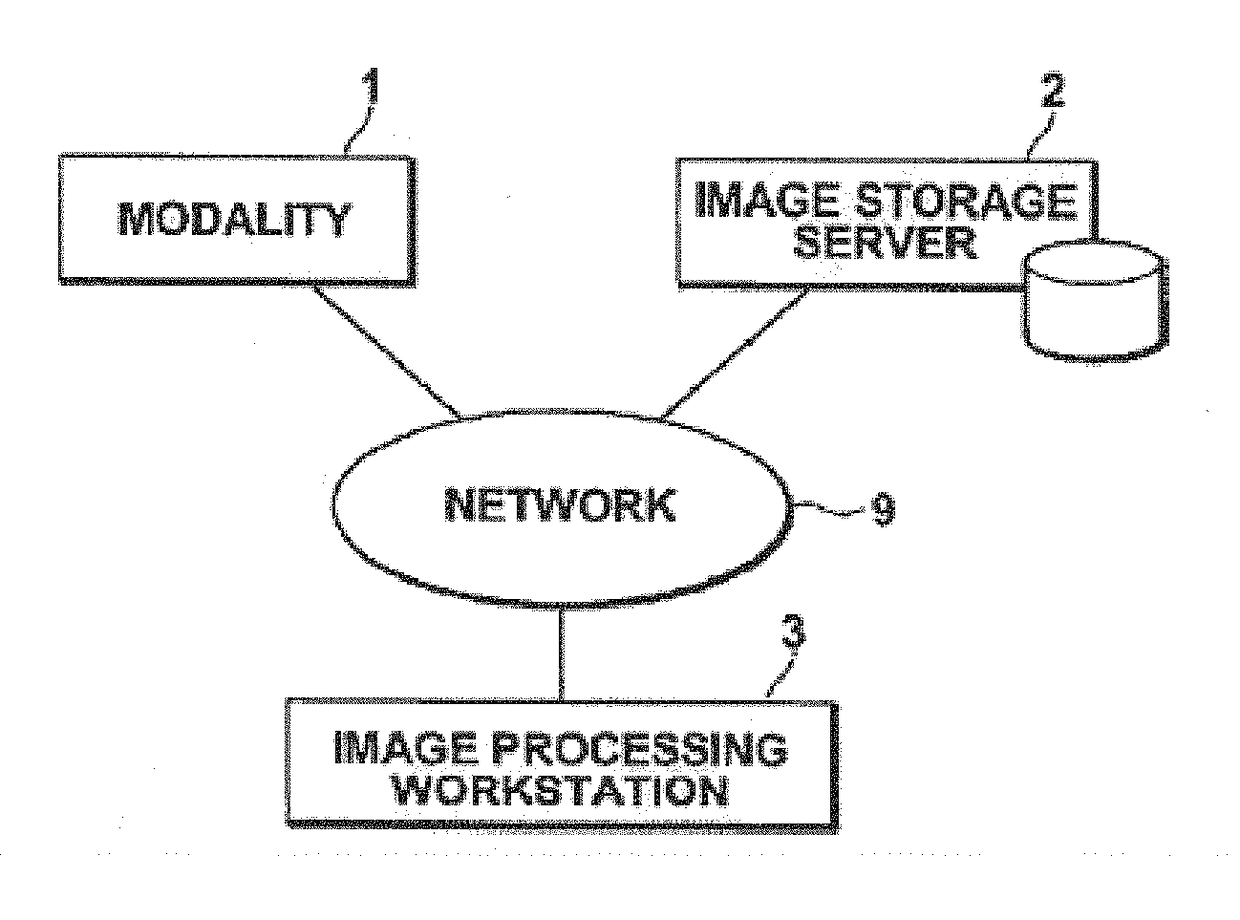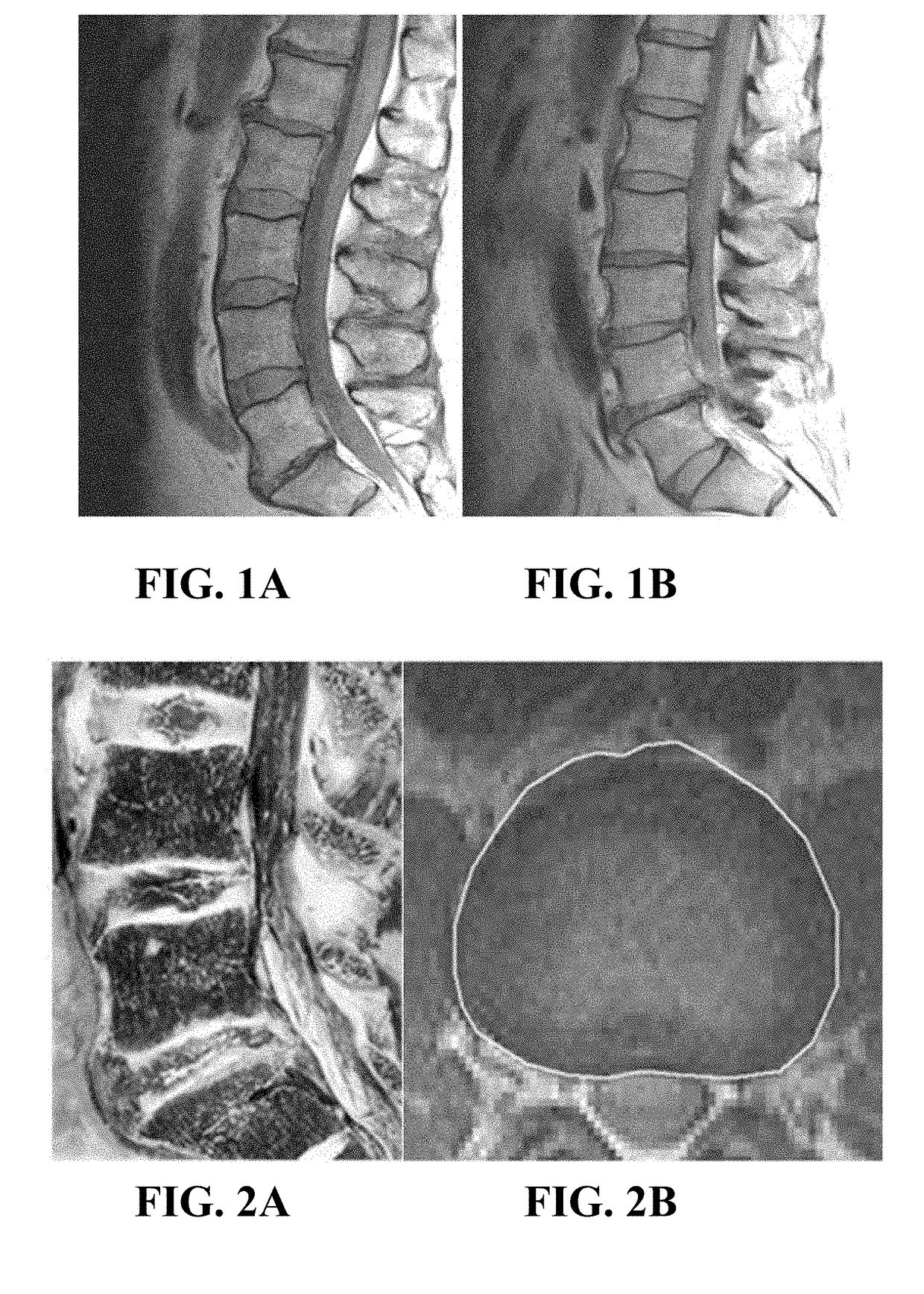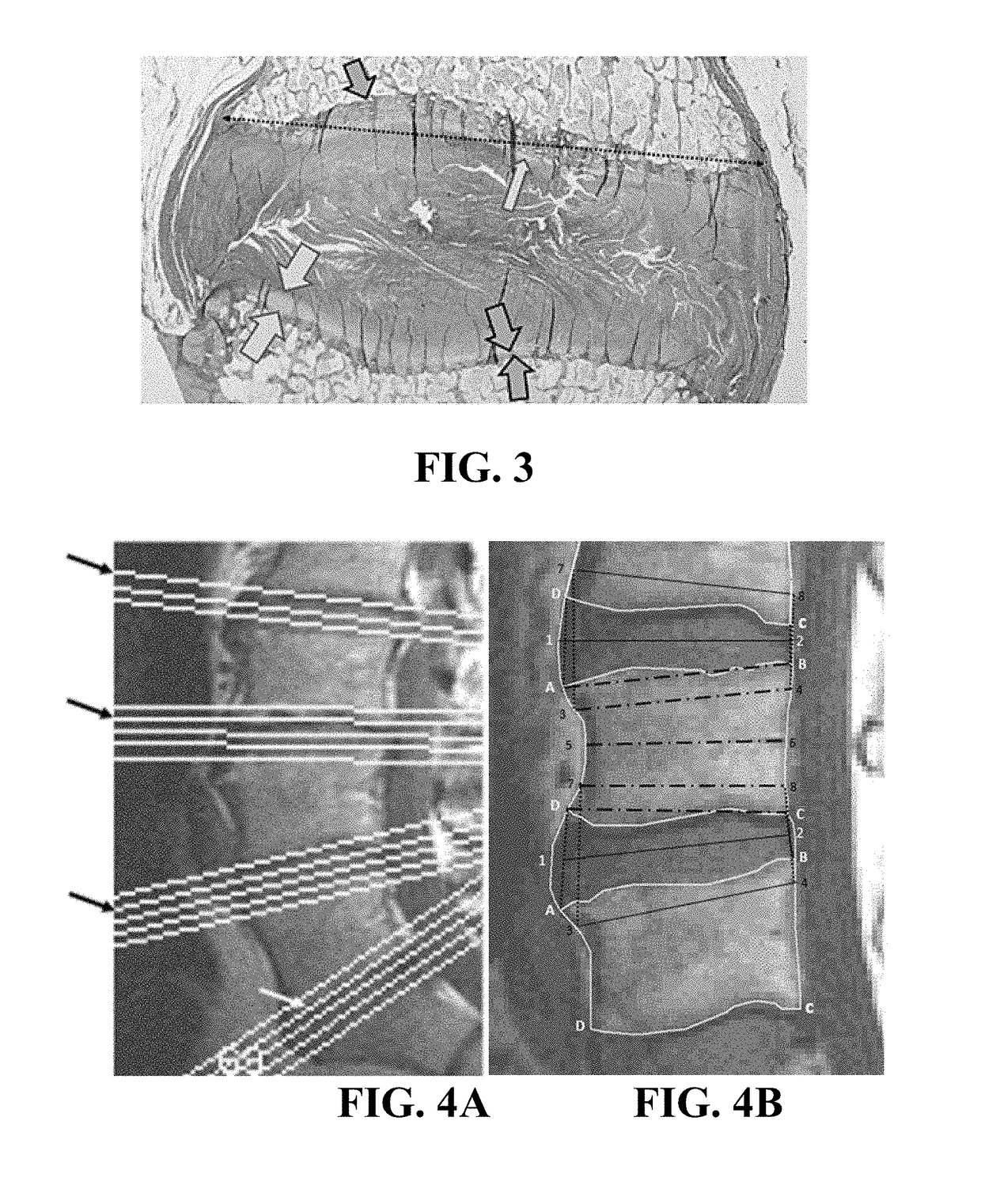Systems and methods for identification and prediction of structural spine pain
a system and spine technology, applied in the field of structural spine pain identification and prediction systems and methods, can solve the problems of inability to give precise pathoanatomical diagnosis of idiopathic back pain, failure to provide objective diagnosis and interventional therapy, and inability to fully adapt to bipedal evolution
- Summary
- Abstract
- Description
- Claims
- Application Information
AI Technical Summary
Benefits of technology
Problems solved by technology
Method used
Image
Examples
Embodiment Construction
[0027]The present disclosure relates to systems, computer-readable media, and methods for assessing morphometric measures of spinal vertebrae and inter-vertebral discs in a quantitative manner using imaging data, e.g., magnetic resonance imaging (MRI) data, and human body weight measures, for identification and prediction of structural spine pain.
[0028]The systems, computer-readable media, and methodologies of the present disclosure reflect the discovery that susceptibility to structural spine pain (as provoked by loading) increases with decreasing surface area (surface area typically does not decrease in normal aging) of the vertebrate, because with any given level of loading, the pressure in the vertebra is inversely proportional to mean axial area.
[0029]Historically, it took half a century of physiological investigation to determine that vertebrae have an important role in structural spine pain, but the specific locus constituting the origin of structural spine pain was still und...
PUM
 Login to View More
Login to View More Abstract
Description
Claims
Application Information
 Login to View More
Login to View More - R&D
- Intellectual Property
- Life Sciences
- Materials
- Tech Scout
- Unparalleled Data Quality
- Higher Quality Content
- 60% Fewer Hallucinations
Browse by: Latest US Patents, China's latest patents, Technical Efficacy Thesaurus, Application Domain, Technology Topic, Popular Technical Reports.
© 2025 PatSnap. All rights reserved.Legal|Privacy policy|Modern Slavery Act Transparency Statement|Sitemap|About US| Contact US: help@patsnap.com



